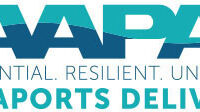Balancing Progress and Aging Infrastructure Key to Ports’ Path Forward

With ports under the microscope, their management of infrastructure needs has never been more important. Ports everywhere are striving to modernize and create more sophisticated operations to accommodate modern vessels and cargo and to operate more efficiently, but often while contending with aging infrastructure that is not always well-equipped for ambitious advancements.
Nick Pestello, director of engineering, maintenance and development at the Port of Lake Charles, and Brandon Bergeron, director of engineering at the Port of Beaumont, tackled that topic in a paper “Blending New Development with Aging Infrastructure,” for their Port Professional Manager program capstone project. Based on the experiences of the authors’ neighboring ports, the paper examines whether to maintain, upgrade or replace a facility and how to navigate financial challenges and other constraints for large-scale projects.
The authors wrote that the evaluation process for projects depends on “a complete assessment of various factors to ensure informed decision-making.” Some key factors include condition assessments, maintenance history, compliance with industry safety standards and regulations, operational efficiencies, future-proofing, environmental considerations, capacity requirements, and a benefit-cost analysis.
“By assessing physical conditions, operation efficiency and capacity requirements, ports can make informed decisions that align with long-term goals, ensuring continued operations, resilience and sustainability,” Pestello and Bergeron wrote. The authors stressed the importance of including a project in a port’s master plan to clearly define its objects and determine if it aligns with a port’s vision and goals. Transitioning the project from the master plan to a capital improvement program then requires additional short-term assessment, alignment with a port’s strategic goals and the consideration of financial impacts and cash flow, they wrote. Regarding financial challenges, Pestello and Bergeron recommend seeking funding from state and federal grants, bonding capacity, taxes, and public-private partnerships – in addition to their funding sources.
“By considering all factors and learning from past experiences, ports can address financial challenges, optimize project planning and tackle the challenge of blending new development with aging infrastructure,” the authors wrote. “The evaluation process, strategic master planning and capital improvement programs ensure that ports remain resilient, adaptive and future-ready in the ever-changing maritime industry.”

To learn more about the Port Professional Manager program, visit www.aapa-ports.org/port-professional-manager.




